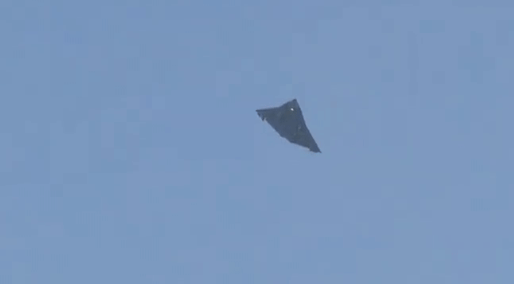China's recent unveiling of advanced stealth fighter jet prototypes has intensified global attention on its growing military capabilities, especially as the U.S. Air Force's Next Generation Air Dominance (NGAD) program faces delays. The developments underscore the evolving dynamics of aerial superiority between the world's two largest military powers.
Images and videos circulating on social media reveal a tailless, delta-winged aircraft conducting flight tests at the Chengdu Aircraft Corporation's factory airfield. Accompanied by a two-seat Chengdu J-20S fighter, the prototype signifies China's move toward modernizing its airpower with sixth-generation technologies. The new design features advanced stealth capabilities, a unique intake configuration, and potentially a three-engine setup aimed at sustained high-speed performance and long-range missions.
The tailless design reflects a strategic shift toward reducing radar signatures and improving aerodynamic efficiency. While such designs enhance stealth and fuel efficiency, they often compromise maneuverability. Analysts speculate that the prototype incorporates next-generation stealth technologies, surpassing those of the J-20, currently China's flagship fifth-generation fighter.
Wow … I‘m still flashed but at first sight, this type seems to be huge in comparison to even a J-20S and indeed features three engines with two bottom and one air-intake on top of the fuselage for the center engine. pic.twitter.com/d42NhZmdPv — @Rupprecht_A (@RupprechtDeino) December 26, 2024
Euan Graham, a senior analyst at the Australian Strategic Policy Institute, praised China's innovation, stating, "Whatever the merits or demerits, it [the new Chinese combat aircraft] appears to be a highly original design. They deserve kudos for that and should shake off any lingering complacency that the U.S. and its allies always set the pace."
The unveiling coincides with a period of uncertainty for the U.S. NGAD program, which aims to replace the F-22 Raptor with a sixth-generation fighter capable of integrating manned and unmanned systems. While an NGAD demonstrator was reportedly flown as early as 2020, the program has yet to transition to production. Recent decisions on the program's future have been deferred to the incoming Trump administration, leaving competitors Boeing and Lockheed Martin to continue maturing their designs.
The delays highlight challenges in maintaining the U.S.'s technological edge amid increasing competition. The NGAD program is critical to countering threats from adversaries like China, whose aviation advancements are reshaping military dynamics. The U.S. Air Force remains committed to advancing the NGAD's capabilities, stating that it is focusing on "technology maturation and risk reduction."
China's prototype, with its potential three-engine configuration, has sparked widespread speculation. The design aims to enhance endurance and payload capacity, suggesting a focus on long-range operations and substantial internal space for fuel, weapons, and advanced sensors. While Beijing has yet to officially comment on the aircraft, its emergence signals a commitment to challenging U.S. air superiority.
The Pentagon, in its annual report on Chinese military power, emphasized the scale of China's aviation forces, which now include more than 2,400 combat aircraft. The report also noted ongoing upgrades to the J-20, including increased missile capacity, further underscoring China's strategic ambitions.
Tyler Rogoway and Thomas Newdick, writing for The War Zone, noted that influential figures like Elon Musk have questioned the focus on manned fighters, advocating instead for advanced unmanned systems. "It is unlikely he would support an even more ambitious fighter program [NGAD]," they wrote, reflecting debates over the future of aerial combat technologies.






